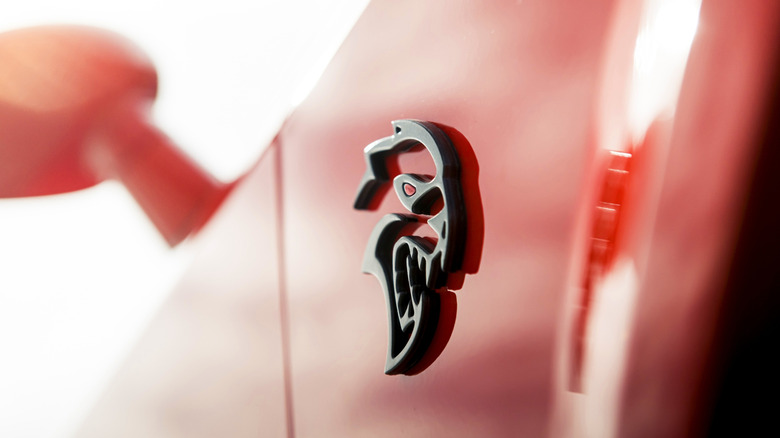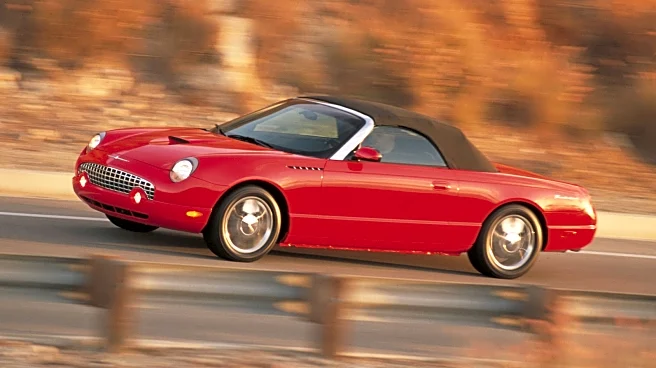
The original Hemi was introduced way back in 1951, representing the latest and greatest standard engine of several full-size Chrysler models. Naturally, things have evolved since then. The Hemi found the spotlight in multiple racing series and muscle cars in the 1960s with the 426, and saw a renaissance in the 2000s. It's this latest iteration of the Hemi which proves most curious, however. Not because of what technology it uses, but rather what technology it doesn't use — namely, the tech that defines
a Hemi as a Hemi.
What, then, does an engine require to be a "true" Hemi? The word itself comes from "hemispherical," owing to its characteristic combustion chamber shape. Granted, no Chrysler Hemi was perfectly round, with the Gen I and II Hemis being more of a semi-sphere than a truly rounded shape. Even so, there is a clear difference between these classic Hemis and the modern ones: namely, that combustion chamber design.
Modern Hemis come in several variants, starting with that semi-spherical shape before essentially smushing it, forming flattened sections designed to improve combustion efficiency. There are five different Gen III Hemi head patterns as defined by their casting numbers, beginning in 2003 with the basic 5.7L Hemi, which does actually feature a rounded head design. Then you have its variants, named "Eagle," "SRT8," "Apache," and "Hellcat" respectively, in order of introduction. Among these, the only other engine to use that classic configuration is the 2005 SRT Hemi head. After that, Chrysler modified the chamber's shape to improve airflow and emissions. Let's dive in and see exactly what each head's anatomy is and how that affects performance figures.
Read more: Every Ford Mustang Generation Ranked Worst To Best
Pros And Cons Of The True Hemi Head

There are several differences between a Hemi and Non-Hemi, but the principle advantage behind the semi-spherical combustion chamber design is a faster increase in combustion chamber pressure compared to the regular pentastar configuration. This is important because the longer it takes for that pressure buildup to occur, the less mechanical advantage the engine has from the momentum of the piston itself.
This affects numerous parts inside of the chamber itself, most notably the piston head, valvetrain, and spark plugs. Hemi pistons have rounded heads to mesh with the hemispherical chamber so as not to leave substantial cavities, and the increase in surface area in going from flat to rounded allows for larger valves. Lastly, Hemis feature two spark plugs per cylinder for a total of 16. Because of the way the cylinder head is shaped, one spark plug wouldn't be sufficient for a complete, consistent burn. Consequently, Chrysler opted for two spark plugs to reduce hydrocarbon emissions and reduce ignition timing requirements. Basically, the head itself is stretched out lengthwise, being an elliptical shape rather than perfectly circular. Having two spark plugs means there's a higher amount of fuel burned in a shorter timeframe, and the fuel burns more evenly.
On the downside, however, this increase in surface area necessitates more physical space in the engine bay for the block itself, along with a heavier and more expensive package. Moreover, a Gen III Hemi, while efficient, produces greenhouse-gas emissions at a higher rate than other head designs because Hemi engines run hotter, thanks to the earlier combustion process. Thus, combustion temperatures aren't cool enough to drastically reduce nitrogen-oxide levels.
Why Modern Hemis Are Different

Various changes have been adopted from the classic Hemi architecture, from more advanced materials to different block and head geometry, but what about the combustion chamber? Well, owing to the gases produced by earlier Hemis, the new models feature an elliptical shape with quench pads. In terms of mechanics, the word "quench" refers to the distance between the piston head at its highest point (top-dead center) and the cylinder head itself. Altering quench through differing distances from piston to cylinder head results in numerous changes within the airflow inside the combustion chamber. These changes are calculated to create as efficient and clean a burn as possible, using techniques to accelerate the air velocity to aid flame propagation and creating compression waves. This is all an advanced way of saying that changing the inside shape of the cylinder head and piston makes the air move and burn differently.
Quench pads are effectively areas where the piston is far closer to the cylinder head which squish the air; "true" Hemis don't have such features. Because air behaves like a fluid, it'll displace in predictable ways; without quench, this will lead to hot-spots and inefficient fuel-burn. Moreover, running different levels of quench also means there's less risk of detonation and overheating by creating turbulent airflow within the cylinder. This directs the air like a water current, and results in improved thermal efficiency.
Despite this change, modern Hemis still retain at least a semi-domed cylinder head, so they are more technically "Semi-Hemis." Nevertheless, they're fascinating engines.
Want the latest in tech and auto trends? Subscribe to our free newsletter for the latest headlines, expert guides, and how-to tips, one email at a time.
Read the original article on SlashGear.












